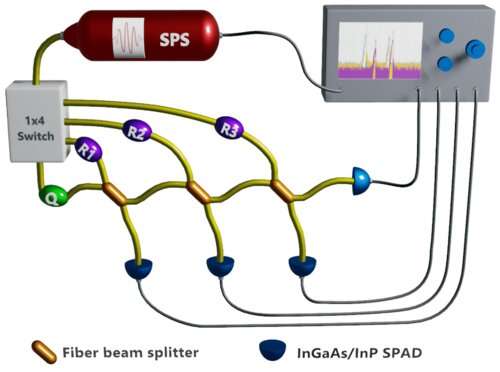Constructor-based irreversibility: Reconciling irreversibility with quantum mechanics

A team of INRiM researchers, in collaboration with Oxford University, demonstrated in the study "Emergence of Constructor-Based Irreversibility in Quantum Systems: Theory and Experiment," published in Physical Review Letters, the compatibility between irreversibility and quantum mechanics time-reversal symmetric laws.
The question about irreversibility has been tackled with different methods, from statistical mechanics methods to information-theoretic descriptions of logically irreversible tasks, as well as classical and quantum thermodynamics second laws. Regardless of the method, a conflict always arises between the modelization of irreversible phenomena and the time-reversible quantum laws at the microscopic scale.
In this work, irreversibility has been defined as the fact that a transformation (T) can be realized arbitrarily well by a cyclic machine, but the same does not hold for its inverse (T~). A typical example of this irreversibility definition is given by Joule's experiment: a volume of water can only be mechanically heated (but not cooled down). The concept of a cyclic machine performing a transformation was generalized by von Neumann to a constructor (i.e., a system able to perform a certain task on another system while remaining capable of repeating the procedure). Hence, a transformation is possible only if there exists a constructor able to realize it. In this study, this irreversibility, generalizing the one of Joule's experiment, is called constructor-based irreversibility.
To show the compatibility between this newly-defined irreversibility and the time-reversal-symmetric laws of quantum mechanics, the researchers studied a qubit-based toy model centered on the quantum homogenizer (i.e., a machine composed of a set of N qubits, each identically prepared in a specific state). Interacting with the N qubits of the homogenizer by means of subsequent partial SWAPs (quantum gates able to partially swap the states of two qubits), the state of a certain qubit Q can be adiabatically transformed into the homogenizer one, inducing at the same time a slight modification in the machine.
If our T is the "pure-to-mixed" transformation (the one in which Q passes from a pure state to a maximally-mixed one), it can be shown that this quantum homogenizer satisfies the criteria to be considered a proper constructor, while the same does not happen for the one realizing T~ ("mixed-to-pure" case). This means that, even though T is possible, its counterpart T~ is not; hence, we've recovered irreversibility even in a scenario modeled by time-reversible laws.
In order to quantitatively demonstrate this, researchers performed an experiment exploiting high-precision single-photon qubits, generated by a low-noise prototype source emitting fiber-coupled single photons at 1550 nm.
The interaction between the qubit Q and a N = 3 quantum homogenizer was obtained by cascading three 50:50 fiber beam splitters, whose outputs were detected by InGaAs/InP single-photon avalanche diodes. Finally, the detector's outputs were sent to a time-tagging coincidence module.
With this setup, researchers first studied the performances of the quantum homogenizer for different intensities of the partial SWAP gate, and they subsequently evaluated, for both T and T~, the accuracy of the machine in the task realization and its resilience to repeated usages. By doing this, researchers confirmed their theoretical predictions and numerical simulations, showing that, while the quantum homogenizer for T can qualify as a constructor, the one for T~ deteriorates too rapidly, ultimately not being able to perform such a transformation.
This can be regarded as a clear proof of the compatibility between constructor-based irreversibility and quantum theory time-reversible laws, giving a new viewpoint on the emergence of thermodynamical irreversibility in a quantum mechanical framework.
More information: Chiara Marletto et al, Emergence of Constructor-Based Irreversibility in Quantum Systems: Theory and Experiment, Physical Review Letters (2022). DOI: 10.1103/PhysRevLett.128.080401
Journal information: Physical Review Letters
Provided by INRIM - Istituto Nazionale di Ricerca Metrologica




















